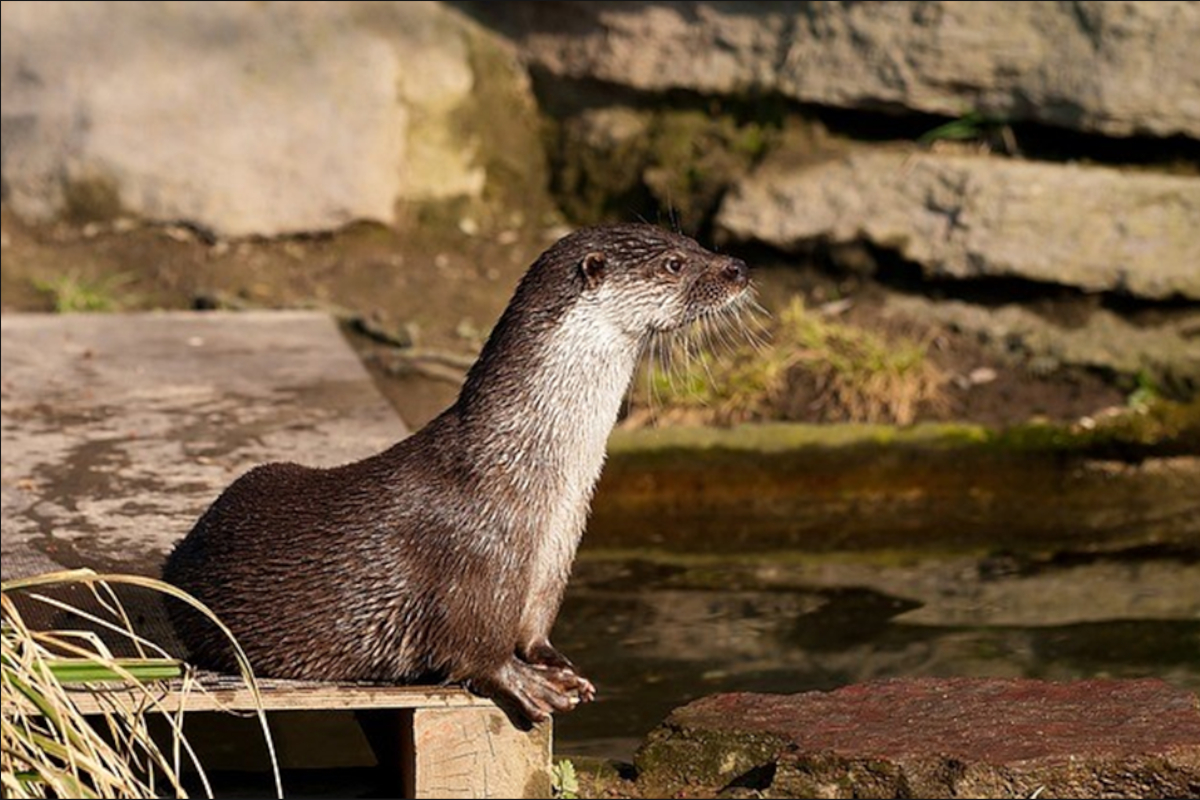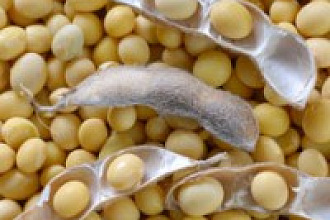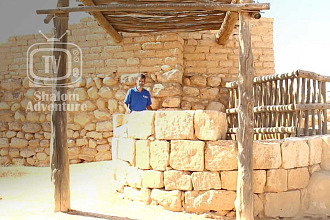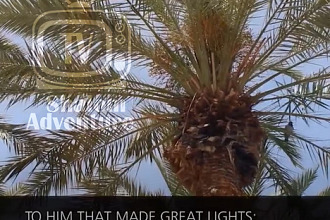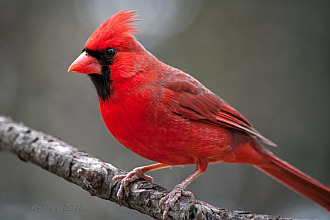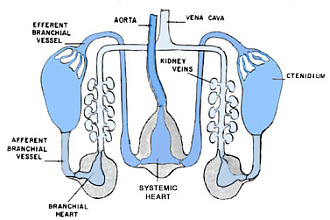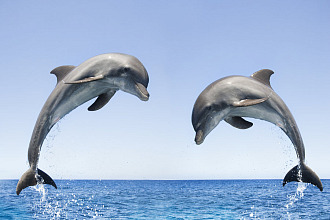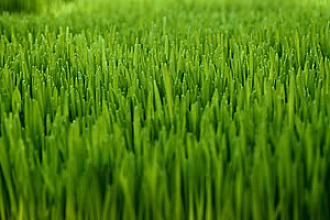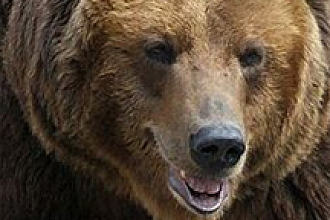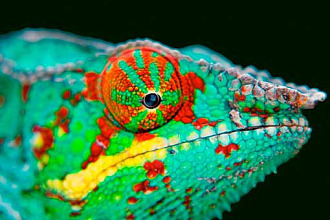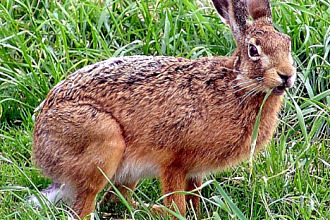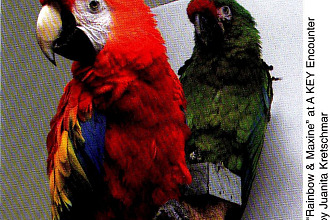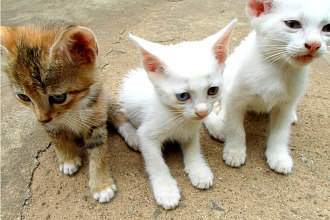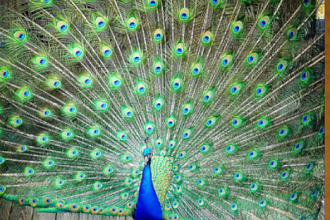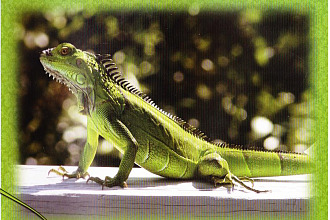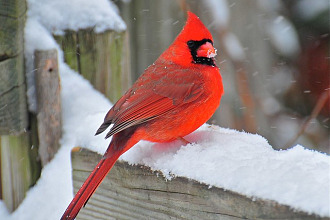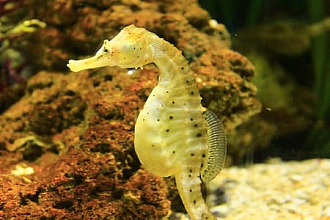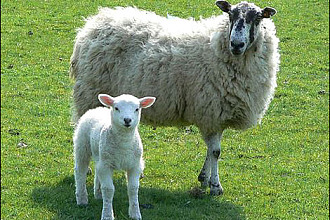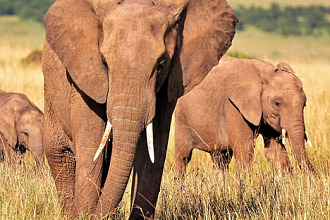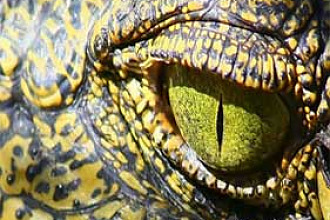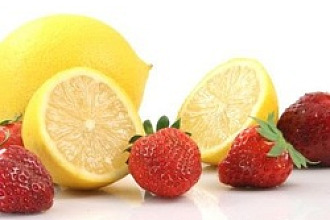It is normal for a marine animal to have a layer of fat to protect it from cold ocean water. Normal—except for the sea otter! Did God forget something in their design? Not at all. In fact, the sea otter has something beyond what any other animal has. Not by accident the Divine Designer gave the sea otter unbelievably thick fur! Researchers have found the sea otter has from a quarter million to one million hairs per square inch covering its body! That thick fur comes in two layers.
The outer layer of long waterproof "guard hairs" protect the second layer of shorter hairs next to the skin—which is kept completely dry by those guard hairs! The waterproof capacity of the guard hairs depends on their being kept clean. But how does the sea otter reach every part of their bodies to do a clean-up? Their Maker, in another thoughtful not-by-accident gift, created the sea otter with loose skin and an unusually supple skeleton. That way they can reach around and groom every inch of their bodies. And since only a small amount of hair sheds at a time, the thick coat of fur lasts all year. So they're kept totally insulated—toasty warm. Therefore they can spend their entire lives in the ocean. And while the sea otter does have the ability to walk on land, it's more convenient to stay in the water since the fifth digit on each hind foot is extra long, facilitating swimming while lying on their back, but it doesn't facilitate easy walking. It wasn't God's plan.
The sea otter is roly-poly, and with its cold environment, must consume the equivalent of at least 25% of its weight in food daily. So, not by accident, the Creator gave the sea otter the ability to use tools in getting food! It's the only mammal (other than primates) who can do this. For example, it makes use of small rocks or other objects to pry a shellfish away from a rock—then uses that "tool" to hammer the shell open to reach the delicacy inside. Sometimes it will hold its breath a few minutes and dive over 300 feet to obtain sea urchins, mollusks, crustaceans and certain fish. Then it uses its sensitive whiskers and forepaws to locate and catch prey—with their paws rather than their teeth as do other marine animals. They place their food in a pouch located across its chest, and when they rise to the surface they float on their backs, reach into the pouch, and begin munching on their meal.
Now two more God-given not-by-accident designs: 1. Besides obtaining water through the food it eats, the sea otter drinks salt water! Then, with its relatively large kidneys, it filters fresh water from that sea water, excreting concentrated urine with no problem! 2. Finally a sea otter takes naps while lying on its back, floating in the sea. (It makes no den or burrow—just lives right out in the water) But how does this ball of buoyant fur keep from drifting far out in the ocean while sleeping? Here's another not-by-accident solution the Master Programmer put in their heads: The sea otter takes kelp or other seaweed and wraps it around himself—using that secured growing plant as an anchor to hold himself in place while sleeping! And a mother sea otter does the same with her babies, wrapping them in seaweed while she forages for food. Her babies are snug and secure. It's what human parents do when they strap their babies in place in high chairs or car seats. The mother sea otter sometimes caresses her baby by the hour while grooming her little one. It's like the kindly care the Creator Himself gives us when, like babies, we need all sorts of cleansing protection and even restraint—when we begin life as His Christian children—and even when we're grown up and think we know it all, He's watching kindly. He's there for us!
"NOT BY ACCIDENT" (c) Juanita Kretschmar is used by permission and was first published in the book "Not By Accident" 3 page 31

